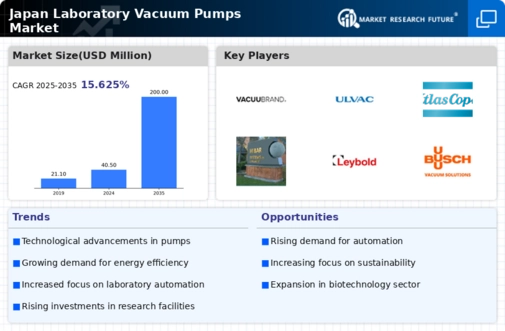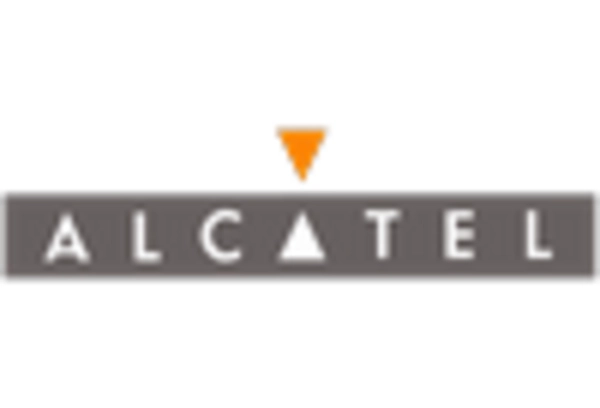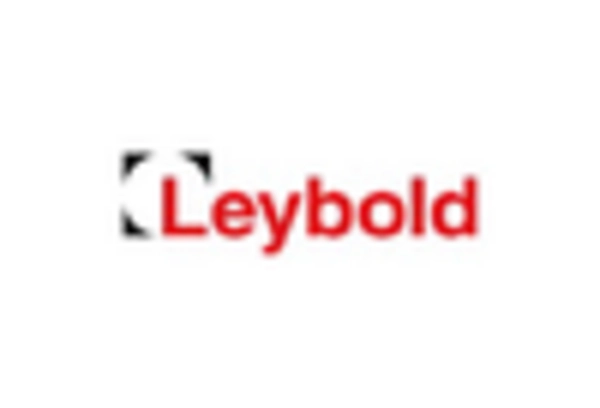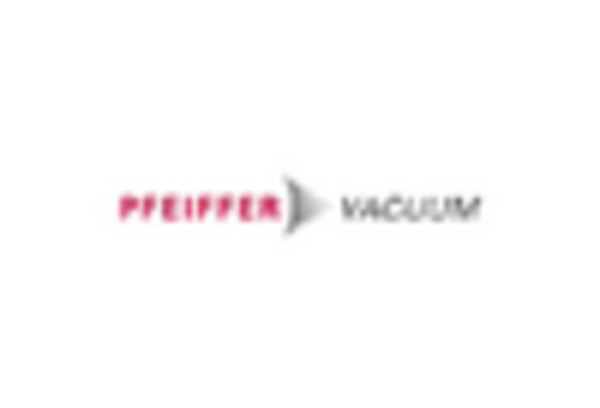Rising Research Activities
The laboratory vacuum-pumps market in Japan is experiencing growth due to an increase in research activities across various sectors, including pharmaceuticals, biotechnology, and materials science. The Japanese government has been investing heavily in research and development, with funding reaching approximately ¥1 trillion in recent years. This surge in funding has led to the establishment of numerous research facilities, which require advanced laboratory equipment, including vacuum pumps. As a result, the demand for high-performance laboratory vacuum pumps is likely to rise, as researchers seek reliable and efficient solutions for their experiments. Furthermore, the emphasis on innovation in research methodologies may drive the adoption of new vacuum technologies, thereby enhancing the laboratory vacuum-pumps market in Japan.
Growth in Environmental Testing
The laboratory vacuum-pumps market in Japan is also being driven by the increasing emphasis on environmental testing. With growing concerns about pollution and environmental sustainability, there is a rising demand for laboratory services that can analyze air, water, and soil samples. Vacuum pumps are essential in these testing processes, as they facilitate the collection and preparation of samples for analysis. The Japanese government has implemented various initiatives to promote environmental protection, which has led to an increase in funding for environmental research. Consequently, laboratories engaged in environmental testing are likely to invest in advanced vacuum pump technologies, thereby propelling the growth of the laboratory vacuum-pumps market.
Increased Focus on Quality Control
Quality control is becoming increasingly critical in various industries, including food and pharmaceuticals, which is driving the laboratory vacuum-pumps market in Japan. Stringent regulations and standards necessitate the use of reliable laboratory equipment to ensure product safety and efficacy. Vacuum pumps are essential for processes such as degassing and drying, which are vital for maintaining quality in production. As companies prioritize compliance with quality standards, the demand for high-quality laboratory vacuum pumps is likely to rise. This focus on quality control not only enhances the reputation of manufacturers but also contributes to the overall growth of the laboratory vacuum-pumps market, as businesses invest in superior equipment to meet regulatory requirements.
Expansion of Pharmaceutical Manufacturing
The pharmaceutical industry in Japan is undergoing significant expansion, which is positively impacting the laboratory vacuum-pumps market. With the market size of the pharmaceutical sector projected to reach ¥10 trillion by 2025, there is a growing need for efficient manufacturing processes. Laboratory vacuum pumps play a crucial role in various stages of drug development and production, including solvent removal and filtration processes. As pharmaceutical companies strive to enhance productivity and ensure product quality, the demand for advanced vacuum pump systems is expected to increase. This trend indicates a robust growth trajectory for the laboratory vacuum-pumps market, as manufacturers seek to invest in state-of-the-art equipment to meet regulatory standards and improve operational efficiency.
Technological Integration in Laboratories
The integration of advanced technologies in laboratories is a key driver for the laboratory vacuum-pumps market in Japan. This integration is crucial for enhancing operational efficiency. The adoption of automation and digitalization in laboratory settings has led to a demand for vacuum pumps that can seamlessly integrate with other laboratory equipment. For instance, the use of smart vacuum systems that can be monitored and controlled remotely is becoming increasingly popular. This trend is likely to enhance the efficiency of laboratory operations, as researchers can optimize their workflows and reduce downtime. As laboratories continue to modernize, the laboratory vacuum-pumps market is expected to benefit from the growing need for compatible and innovative vacuum solutions that align with the latest technological advancements.

















Leave a Comment